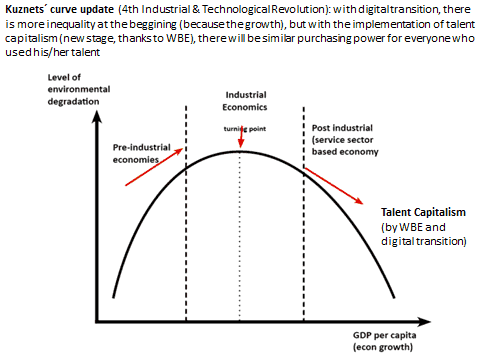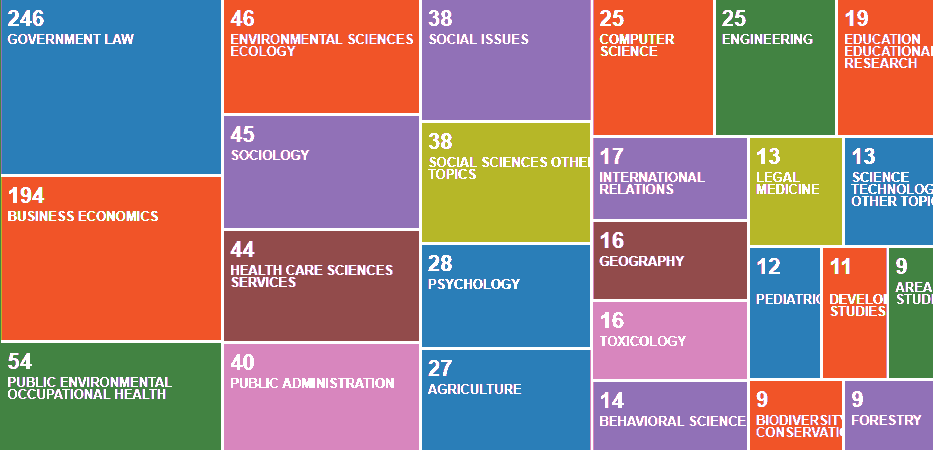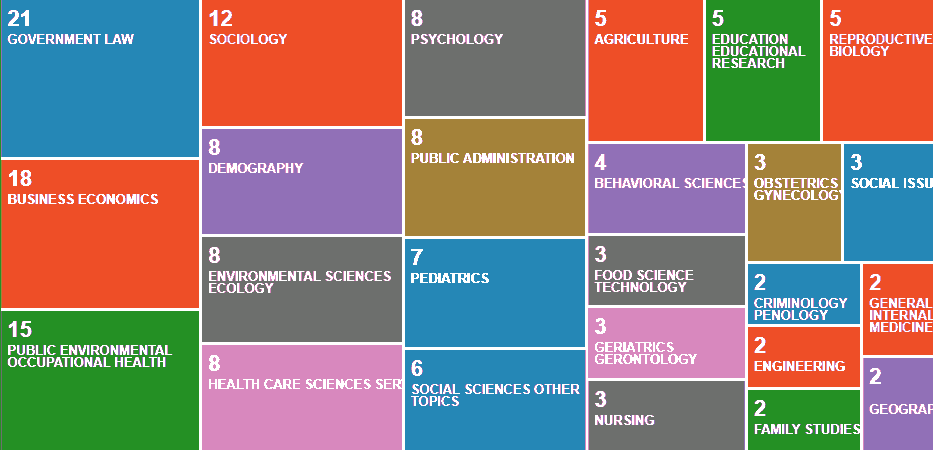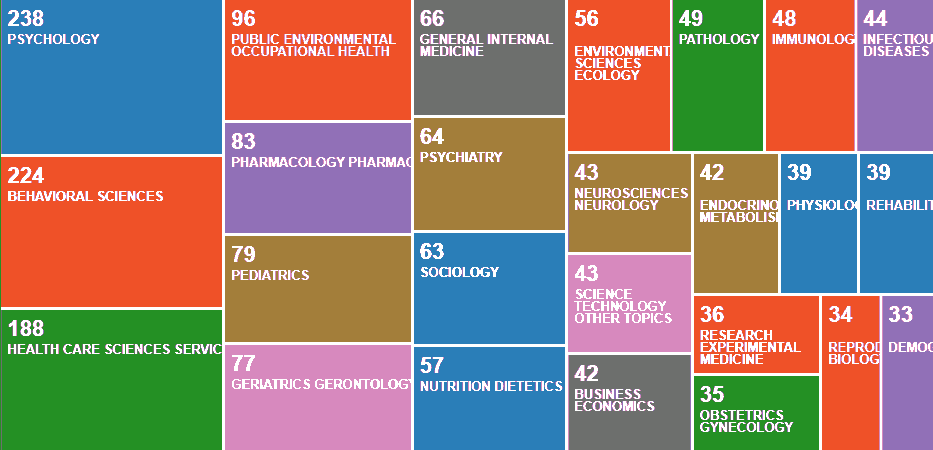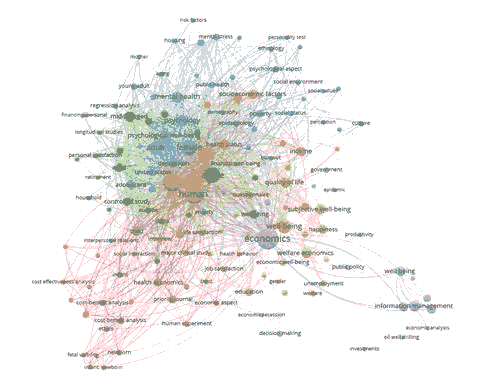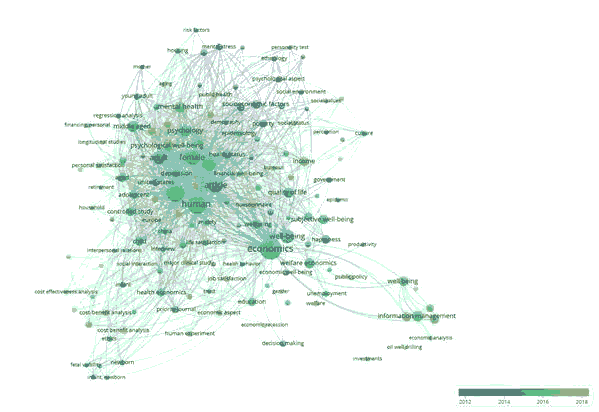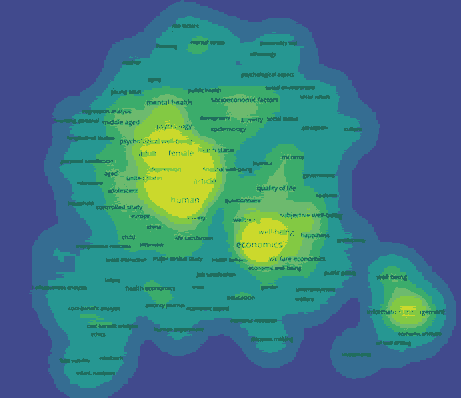Research Article: 2021 Vol: 24 Issue: 1S
Wellbeing Economics: Beyond the Labour Compliance & Challenge for Business Culture
Antonio Sánchez-Bayón, Universidad Rey Juan Carlos
Martín García-Vaquero, Foro Innovación & Universidad Externado de Colombia
José Lominchar, Universidad a Distancia de Madrid-UDIMA
Keywords
Labour Economics, Law & Economics, Wellbeing Economics (WBE), Welfare State Economy (WSE), Compliance, Accountability, Digital Transition, Horizon 2030.
Abstract
This is an article of Labour Economics and Law & Economics, which explains the paradigm switch, from welfare state economy to wellbeing economics. This switch means the change of rules, institutions and processes, moving from a level of heteronomous responsibility with a public compliance system (controlled by the Public Institutions with statutory law and sanctions) to pass to the next level of autonomous responsibility with a social accountability and self-compliance system (decentralized network with improvements in the business culture by contracts and commitments). It is paid attention to the state of the art, with a comparative study of the scientific and professional sources and the knowledge production. Finally, there is a diagnosis in the challenges of wellbeing economics and its autonomous compliance to face the COVID-19 crisis and Horizon 2030.
Introduction
Under the globalization and the digital transition , it is happening in the last decades a global change and challenge for labour relations (Lominchar et al., 2020; Sánchez-Bayón, 2020). There is not a great warning for labour relations, as the new luddite militant defend (Bailey, 1998; Sale, 1996). They are against to the progress, in the way of open markets and technological advances, because they consider them the reason of local working conditions violation, jobs destruction and social inequality increase. This position remembers Bastiat´s critique in “Candle makers request” (Bastiat, 1845). Actually, in perspective view, it is just a usual cyclical correction, that happens in each step of the industrial & technological revolutions (Table 1).
| Table 1 Comparison Relating Industrial and Technological Revolutions |
||
|---|---|---|
| Revolutions | Features | Macro and social items |
| 1st Rev. (1790-1870, Atlantic Europe). | coal and steam engine; it goes from the countryside to urban workshops (highlighting the textile sector); civil service leasing contracts (for agreed days and benefits); estates and guilds slow the progress. | Less than 1,200 million people, with a world GDP per capita of less than $ 1,000. |
| 2nd Rev. (1880-1950, in Europe and the Anglo-Saxon World). | oil, electricity and assembly line, it goes from workshops to factories (highlighting the automobile sector); proper employment contracts (under a protective legal regime); its advance slows down (with accelerations and recessions) wars and state interventions. | At the beginning of the 20 c. the World population was of 2,000 million people approx., with a GDP per capita over $1,000. |
| 3rd Rev. (1960-2008, in the West & Asian tigers). | computing and robotization, plus nuclear and renewable energy; it goes from factories to centralized techno-bureaucratic headquarters and offshored production and sales modules, plus the emergence of malls or shopping centers, with a diversity of labour relations and employability (civil and commercial contracts, labour law, civil servants and administrative law, etc.). State interventions continue to alter their progress (this is WSE's golden age). | At the turn of the millennium, the worldwide population was over 6,000 million inhabitants and its GDP per capita was close to $ 10,000. |
| 4th Rev.(2008-2030, in the World –specially, Trans-Pacific Area). | digital transformation, green & blue energies; from offices to home with teleworking (main sector: entertainment, i.e., resorts, streaming tv & videogames, MICE: meetings-initiatives-conferences-events). | World population around 7,500 million people (estimated growth up to 10,000 million for global demography transition), with a GDP per capita over $14,000. |
Source: (Sánchez-Bayón, 2019 & 2020. Sánchez-Bayón & García-Ramos, 2021).
How do those revolutions affect the labour relations? There has been a general improvement: thanks to the 2nd industrial and technological revolution, a tenant farmer with no limit of hours and with a subsistence production, he became an industrial worker with an agreed salary and schedule; with the 3rd industrial and technological revolution, the industrial worker had the chance to be an office worker, a firm professional or a civil servant with better labour conditions and incomes which allow savings (i.e., bonus for extra-hours); under the 4th industrial and technological revolution, it is time for more autonomy and freedom (i.e., teleworking). The relationship between technological advances and labour wellbeing is not proportionally inverse, but exponentially convergent (Talido, 2017; Sánchez-Bayón & García-Ramos, 2021): the more technological advances take place, the more global wealth increases (both in terms of income and benefits to be enjoyed). The greater convergence takes place in the World live standard, thus increasing the wellbeing for humanity and the life expectation (both are components of the measurement of the global happiness index (Easterlin, 1974 & 2010; Rojas, 2014; VV.AA.a, 2012; VV.AA.b, 2020). So, the artificial intelligence has to overcome and replace the human being in tedious tasks -doing it even better- is called singularity (Kurzweil, 2005), and its point of no return is predicted for Horizon 2030 (coinciding with the rest of planetary convergence plans, such as Global Compact-UUNN, Future of work-International Labour Organization-ILO, Green Deal-European Union-EU, etc.). With the singularity implementation, there is going to be more production at lower cost, increasing the global live standard, as predicted by the Kuznets´curve (see figure (Kuznets, 1955 & 1963). The forecast of global firms (from general firms, i.e., PWC, Deloitte, McKinsey, to specialized, i.e., Manpower, Randstad, Adecco) and think-tanks (i.e., GPTW, Hofstede Insights, Capgemini-Institute), about the future of labour relations with digital transition and beyond Horizon 2030, it is a scenario close 2nd industrial & technological revolution: in 1880´s, there was a great transformation of labor relations, moving from the countryside to the city, and with it, from commercial to industrial capitalism, declining the first or agrarian sector, growing the secondary or industrial sector, in addition to awakening the tertiary or services sector.
Just in the USA, half of the traditional jobs in the first sector disappeared, with more than double emerging in the secondary and tertiary sectors. This scenario is the one expected in Horizon 2030, when the 4th revolution ends and the 5th revolution begins (time to switch the industrial & development capitalism for talent capitalism (Nordstrom & Ridderstrale, 2000 & 2007; Cuberio, 2012; Huerta de Soto et al., 2021). To realize this scenario, previously, it is necessary the implementation of wellbeing economics and its impact in labour relations, based on the business culture of self-compliance and accountability to improve the general wellness by the triple-commitment people-planet-profits (see next section).
This introduction to the labour relations development is completed with the following table, with the steps to move from the welfare state economy (based in handy-made) to wellbeing economics (based in knowledge-made) see in Table 2.
| Table 2 Labour Relations Development: From Hygienic Measures (Emerging Organizations In Welfare State Economy and its Heteronomous Compliance) to Motivational (Mature Organizations in Wellbeing Economics with Self-Compliance) |
|---|
| a) Hygienic measures 1.0: productivity and incentives (1900´s-1940´s): - Rewards and punishments; - Salary moves the worker (bonus) |
| b) Business Ethics and CSR (from 1950's - alternative to WSE): - Participation in decision making and company identity (mission, vision, values) - From marketing issue to company commitment with stakeholders - Accountability & transparency |
| c) Hygienic measures 2.0: ergonomic and prevention actions (1990´s): - Improvement of labour conditions and work climate & environment (common areas); - Accidents prevention plans & non-discrimination actions (i.e., stop harassment, disability integration) |
| d) Hygienic measures 3.0: ethics codes & compliance (2000´s) e) Motivation measures 1.0: work quality in health organizations (2000´s): - processes and job design; open doors policies; team building actions; - Care for worker-family (health insurance, childcare) |
| f) Motivation measures 2.0: gamification & happiness management (Seligman´s positive organizational psychology) - Care for a collaborator as a client; - Promote healthy habits, personal talent development, celebration culture, etc. |
Source: own-elaboration (Sánchez-Bayón & Trincado, 2020).
Paradigm Switch: From Welfare State Economy to Wellbeing Economics
The welfare state economy is a notion that arose from two common milestones in the Western: a) the end of the war and its scarcity (war state) and the beginning of the wealth to spread among citizens (welfare state); b) secularization, assuming the nation-state the benefit functions of the Church (i.e., education, health, insurances). In turn, there are several great inspiring focuses: a) Bismarck’s Germany in the 1870s (through a social security system and client networks); b) Roosevelt's USA in the interwar period and its New Deal (or new social pact, with an economic interventionism that prolonged the Great Depression and required a constitutional amendment, to limit the presidential terms); c) the United Kingdom of Great Britain (UK) during the interwar period, which needed to compensate the metropolis, for the successive loss of colonies, etc. In this context (interwar), a group of economists at University of Cambridge (Pigou, 1920; Keynes, 1936; Robinson, 1933), they began to disseminate the notion and model of welfare state economy (WSE), until it becomes the mainstream model from the 60´s (Lindbeck, 1971). WSE is a mechanical applied macroeconomics system (not theoretical, just statistical), that in techno-bureaucratic hands could lead to sustainable development for the country. The implementation of such recipes would come after World War II from Liberal and Labour partisans in the UK, being corrected and increased on the Continent by Christian Democrats and Social Democrats. Thus, in practice, four major WSE models have been maintained in Europe (without harmonization by the European Union):
1. Christian Democratic model: based on solidarity (i.e., Austria, Belgium, France, Germany, Italy & Spain);
2. Social Democratic model: based on support (i.e., Denmark, Finland, Netherlands, Norway & Sweden);
3. Liberal model: based on assistance (i.e., Czechia, Slovakia, Hungary);
4. Mix model (i.e., Ireland, UK).
With globalization, the expiration of the nation-state and its WSE model were confirmed. Instead, with the digital economy, a new stage is being pushed forward, such as the personal WellBeing Economics (WBE). Synthetically, this implies a pendulum movement: a) from a rigid and limited bureaucratic model (centralized and coercive), based on scarcity and supervised by the public sector (also with a heteronomous compliance of sanctions), in which economic agents played a separate and invariable role, with homogeneous resources and factors given, and it´s just necessary to apply the appropriate economic policies to increase GDP; b) moving to a flexible, autonomous and autopoietic agile model (of free social cooperation and autonomous accountability), based on abundance, dynamic efficiency and talent. In the WBE model, economic teleology is recovered, because people do not participate in economics just to increase GDP, it is because they want to improve the personal satisfaction and wellbeing, related with happiness. This was previously defended by Austrian economists such as Mises (Mises, 1949), utilitarian economists such as Bentham or Malthus, even the modern proto-economists of the School of Salamanca, who from their moral economy, were more humanists (Rothbard, 1995).
The WBE impulse is supported: a) academically, by the amalgamation of Cultural Economics (which includes sociological and psychological economics, labour & business economics, sociology of work and organizations, institutional and neo-institutional economics, etc. (Simon, 1982; Coase, 1992; Becker, 1971 & 1993; Sen, 1999; Kahneman, 2011; Thaler, 2016); b) professionally, through a collaborative intelligence resulting from initiatives of international organizations and forums (i.e., Global compact & Workplace wellbeing-UUNN, Economy of wellbeing-OECD, Wellbeing Economy Alliance-WEF), together with transnational consultant firms (i.e., Deloitte, Manpower) and think-tanks (i.e., GPTW, Hofstede Insights), where the leading companies and professionals in the ongoing transformation: a non-media, but a finalist economy, oriented towards people and their happiness, with the development of their talent and business function, leading to a richer and better world.
With the black swan of COVID-19 (Taleb, 2007), there is an intensification of a movement into the mainstream (which started with the 2008 recession), to stop the paradigm switch and the realization of WBE (planned for Horizon 2030), to come back to WSE and the national re-industrialization protectionism (Tregenna, 2011 & 2013; Tolkachev, 2014; Prisecaru, 2015; Nassif et al., 2018); also, it is supported by international institutions (i.e., deglobalization-UUNN, global reset-WEF. Guterres, 2020). This drift means a revival of old-fashion recipes (close to the economic policies during the stagflation in 1970´s) but that would mean condemning us to scarcity, subordinate and replicating work, in bureaucratic organizations and only concerned with results and hygienic measures, heteronomous compliance of sanctions, etc. (other critics in Bagus et al., 2021). Without black swans or government disruptions and interventions, the evolutionary theory of social institutions (Menger, 1871; Hayek, 1952; Martínez Meseguer, 2006), it explains the transition from more control to more freedom and wellness, which means to move from labour law (in favor of workers, just HR considered) to compliance (monitoring the business activity, to control the economy and to enforce the SDG Agenda) and them to WBE (in favor of knowledge and entrepreneurship for dynamic efficiency and general satisfaction, Huerta de Soto, 2008). This current dichotomy, between the mainstream revival of WSE and the mainline development (Boettke et al., 2016) for WBE, it shows another dichotomy related with scholar literature and professional know-how production.
Next, there is an explanation about the state of the art in this topic and how to deal with the dichotomy mentioned.
Scientific and Professional Knowledge: A Comparative Research Methodology
Labour Law, labour compliance and WBE are linked topics (for scientific and professional knowledge production), with a common timeline development (see tables), concepts correlations by clusters and co-citations in net. For this reason, this paper has used a bibliometric study based on social network analysis, cluster concept maps and heat maps (using a mix of metrics and design programs, with the final filter by VOSViewer). According to the articulation of knowledge, it is offered first an analysis of the main academic data bases (Web of Science and Scopus), and them a comparative study with professional know-how production.
The result to apply those techniques to Web of Science (WoS) and Scopus is the following:
a) Labour Law and compliance (see Figure 2): WoS (from 90´s – until now): 462 results; Scopus (2012 – until now): 50 results (all of them included in WoS).
b) Labour Law and wellbeing (see Figure 3): WoS (idem): 43; Scopus (idem): 5 (ibidem).
c) Compliance and wellbeing (see Figure 4): WoS (idem): 485 articles; Scopus (idem): less than 50 (ibidem).
d) Labour Law, compliance and wellbeing: there is a not relevant result in WoS, neither in Scopus (there is a gap in the academic literature, but there is not in the professional know-how production,(see Figure 5) i.e., reports and working-papers by consult firms or think-tanks).
e) Wellbeing economics: in WoS and Scopus, there are more than 5,000 results and most of them come from Natural Sciences, because the wellbeing production started in 2000´s in Medicine and Psychology with health organizations and wellness. Currently, the number of papers in Social Sciences, especially in Economics & Business, it is in progress (see Figure 6) (i.e., Social Sciences: 229; Economics: 139; Business & Management: 89; Psychology: 34; Arts & Humanities. 38; Medicine: 30; Decision Sciences: 23).(see Figure 7)
Figure 2: Labour Law and Compliance Correlations
Source: Own elaboration from Web of Science
Figure 3: Labour Law and Wellbeing Correlations
Source: Own elaboration from Web of Science
After the results of the analysis of scientific-academic sources, in order to compare them with those of professional sources (i.e., web pages, reports, working-papers), since they are not so systematized (in specific databases, but scattered on the Internet), we had to resort to a basic brute force SEO analysis in search engines, the result of which was 5 times higher. It follows that the cognitive dichotomy (between scientific-academic and professional production) is also confirmed: professional production is greater, as it is closer to real changes and agile (without mainstream conditioning).
Discussion and Conclusion
In EBE, the treatment of the worker is not so much due to the benevolence of the state, but to the assurance of its financing, via tax withholdings and contributions to the Social Security Treasury (or equivalent body in each country). Thus, the so-called social conquests are not due to any party or union, and even less to anti-system movements. In fact, it is in the wake of the 2nd industrial and technological revolution, with the massification of industrialization, that a series of shortcomings become evident, and it is the system itself that drives its reform, to ensure its continuity. It was then that the International Labour Office (today the International Labour Organization) was founded, offering a legal framework as a lowest common denominator for the West (today global). This framework was incorporated and improved by the national parliaments, with specialized regulation, being the boom of Labour Law. The starting problem of Labour Law is that it presumes an asymmetrical relationship between employer and worker (today employer and employee), which in reality is due to the condition of subordination and dependence, when hours of life and effort are leased to another in exchange for a salary. This suited the WSE model well, since it fitted in with the need to homogenize the so-called productive factor labor, converting it into the category of "work command", that is, directed replicating technicians. However, with the following industrial and technological revolutions, there was a shift from the industrial sector to the service sector, and with it, the range of labor relations (e.g. civil servants, professionals, contractors) expanded. With such a variety of labor relations, States anchored in the WSE model found it difficult to continue controlling their financing (as they lost coerciveness and depended on the willingness of each agent to comply), hence the resistance to the digital transition, preferring to keep the bulk of their population still anchored in the industrial or service sector as employees. This was the case of the EU Member States: instead of moving forward together to dissolve the then widespread Ministry of Employment (in the 2010s), in order to reduce bureaucracy and encourage entrepreneurship (along the lines of neighbours such as Switzerland or Norway), in 2014, France instead returned to the old Ministry of Labour, with other States progressively joining in (especially the less digitized and more indebted States, such as the southern ones). Such an approach is delaying Europe in the digital transition and its business cultural transformation, stagnating the development of labor relations in an outdated and uncompetitive production model, for lack of entrepreneurship and stimulation of creativity and talent (see later).
Among the most critical approaches to the digital transition and its impact on employment, the theory of the great decoupling stands out: it refers to a process detected at the dawn of globalization (in the mid-1980s), which affects the growth of employment, GDP per capita and disposable income of average families, as all this begins to lag the generalized growth of the global economy, thanks to greater productivity (the result of incipient digitalization). This does not mean, as the resistance to change (and advocates of WSE) have been interpreting it, a trend towards the disappearance of employment and the middle classes (an issue disproved by IMF and World Bank studies, which estimate that every year some 250 million people - twice as many as Mexico - swell the middle class, only that this tends to occur in the greater Trans-Pacific Area - which includes Southeast Asia).
What happens, as in all previous industrial and technological revolutions, is that superfluous jobs disappear (insofar as they are outdated and do not add value), while new opportunities and types of jobs emerge in emerging sectors. Suffice it to recall that in the USA during the 2nd industrial and technological revolution (mentioned before), half of the jobs in the primary sector in the countryside disappeared, while the industrial sector boomed, and the service sector in the cities began to grow. In short, what the resistance in the West describes as the great decoupling is nothing more than evidence of the changes underway, with new sectors and environments emerging as other parts of the world (especially the great Trans-Pacific Area) grow economically. It is a sort of revival of the theory of unequal exchange and the neo-Marxist-inspired world-system. What is becoming evident is that alienating and worthless work is being taken over by robotization and digitalization, becoming more productive (generating more goods and at lower cost), while freeing human beings for more creative tasks worthy of their condition. It is a matter of knowing how to discover one's own talent and adopting an entrepreneurial and motivated attitude, to become a qualified and well-paid collaborator (an issue that the great decoupling recognizes: there is less and less unskilled and poorly paid work, and there are better opportunities and remuneration for talented collaborators). It should also be borne in mind that the WSE formula of the low-skilled worker with a permanent full-time job has already been extinguished (it is still taking a long time to disappear completely, with certain reminiscences remaining, especially in the Public sector). However, the talented collaborator's turn has not come either, given the time lag in the total extinction of the WSE model.
The problem is resistance to change, which hinders the transition from WSE to DE, making the emergence of the talented collaborator in a system not adapted to it more complicated: today, this collaborator has to rely on a basket of part-time jobs, contributing for each and every one of them the same as a full-time unskilled worker, only suffering greater restrictions than the former in accessing traditional mechanisms of financing, healthcare, pension, rent, etc. In this agonizing transition, work (strict sense) will gradually become scarcer and more and more precarious, thus urging the emergence of new labor relations (such as those recognizing collaboration, with their own entity and not subsumed to old WSE categories). Meanwhile, the paradox of digital employment is taking place: the vacancies offered for new digital profile positions are not being filled, despite the fact that they are the best paid. The point of no return to complete the digital transition is set for H2030: by then, in addition to the multiple convergence initiatives of international organizations and forums, as well as the realization of uniqueness, there will also be the biological imperative of the complete retirement of the baby-boomer and gen-x generation, forged in the rigidity and bureaucracy of WSE, being relieved by the next generations (more prone to entrepreneurship, by will or by necessity).
As established by Labour Law, its prototypical labor relationship is that of subordinate employment, requiring low qualification and minimum added value, since the worker is conceived as a directed replicant (therefore, a subject to be protected by the public authorities, in order to rebalance its legal-labor relationship). This is something that fits the WSE model, intensified in abundant and replaceable labor; however, in DE, talented, creative and enterprising collaborators are required, who constantly discover the opportunities of change and add value in their labor relations. In this way, security is given up in exchange for freedom, and they cease to be executors and become creators. Talented employees can no longer be technical replicators, as they require a mission, vision and values in which they participate. With globalization and the resurgence of a wide variety of labor relations (beyond labor law), the public sector has resorted to compliance monitoring. Such control, being based on previous standards and resorting to sanctions, has not allowed a greater development of the new labour relations in DE. Hence, it is necessary to go further, as proposed in this and other works (Sánchez-Bayón, 2019 & 2020; Sánchez-Bayón et al., 2020), to facilitate the recognition of new labour relations, doing so through self-regulation and self-compliance (instead of returning to old formulas, as happens to platform riders, when they are returned to the status of employees, thus condemning them to informality).
As for the implications for corporate cultural transformation, with the transition from EBE to DE, there has also been a change in corporate culture. This explains the change from incipient to mature organizations (not because of their age, but because of their degree of adaptation to the new paradigm), as explained below.
- Incipient organizations: only result-oriented and in which little attention is paid to employee hygiene measures (e.g. prevention of occupational hazards, adequate wages and overtime pay). As such, their corporate culture corresponds to corporate social responsibility or CSR 1.0, i.e., understood in a marketing way (advertising from the outside). It is not surprising that it is outsourced to consulting firms or is a direct replica of other discourses and reference organizations. In short, it does not correspond to a corporate culture of its own (it would not even be a culture, since it is not something lived in the organization). It can be detected by its high-sounding discourse, with practices and commitments that are difficult to verify (e.g. reduction of carbon footprint, help to a remote community).
- Consolidated organizations: in terms of market share, but which wish to make changes for improvement, going beyond hygienic measures and starting to promote motivational measures (those that stimulate workers to improve and increase their productivity and commitment). Their culture is connected to CSR 2.0, which accounts for local regulatory compliance (i.e., equality plans, ethical codes, recycling programs), as well as relying on international quality certifications (such as ISO standards). As a result, they are beginning to participate in global transformation forums (i.e., Global Compact-UUNN). In this way, awareness of the importance of corporate culture begins to be raised, so that it can be something lived and participated in a sustained manner, with verifiable impacts and to be shared with others.
- Mature organizations: Not because of their age, but because of their approach and adaptation to the new paradigm, as they are companies prepared for the new business culture, oriented towards people and their motivation. Their culture is one of CSR 3.0, of proximity and easily measurable and verifiable, since it is based on measures that affect their social and natural environment. Thus, CSR ceases to be something from the outside (as a mere attempt to improve the corporate brand, or diligent and transparent regulatory compliance), and becomes something from the inside (designed by and for employees, together with their families: a culture to feel part of and celebrate).
The global consecration of corporate cultural transformation, which brings with it the digital transition, can be manifested in its various expressions. In this case, CSR has been taken as the average unit (but there are many more evidentiary or testing elements). In the EBE model, it was corporate social responsibility or CSR, which today covers any type of organization (including public corporations, NGOs, etc.). This took place with convergent initiatives of the UN (e.g. the millennium agenda of its General Secretariat, the ILO's future of work), all of which were harmonized with the global compact (announced by K. Annan in his speech of 31 January 1999 at the meeting of the World Economic Fund-WEF in Davos, which was formally established on 26 July 2000). Since then, minimum global standards have been set for relations between people, communities and the environment as part of the new corporate (and therefore also business) culture. In addition, a network of local support networks has been established to deepen, broaden and disseminate this commitment and cultural transformation. This has allowed the generation of collaborative intelligence that has given rise to new concurrent and reinforcing initiatives (i.e., FEM's wellness alliance, Great Place To Work's surveys and best practices). Based on this body of knowledge, it is possible to have a roadmap for the widespread implementation of WBE.
Finally, as a revelation about well-being, not state well-being (EBE), but genuine personal wellbeing (WBE), it is urgent to stop perceiving and managing entrepreneurship, talent and happiness management as soft skills and treat them as hard and real content: leadership, motivation, proactivity, etc., must be added to all this (see below). It is insisted that these are not skills to improve relationships, but rather the foundations on which these relationships are institutionalized and give rise to cultural transformation (which in turn affects the socialization of future agents and organizations). In DE, it is difficult to conceive of a partner or an organization that does not operate in these terms, since they are the cardinal points of its journey. This is so because of the required process of re-humanization and resocialization of the social system (that is, the simplified recreation of social reality), since WSE, despite its expressly solidary discourse and commitment to redistribution in favour of the neediest, in reality, ended up being a model of bureaucratization of any process, in addition to generating clientelist dependencies. Once this is understood, it goes without saying that welfare can never come from outside, but starts from within, accepting the self and committing to improve it as much as possible. Just as the nineteenth-century marginal revolution made it clear that only everyone can know his or her personal preferences, it is time to realize now that only everyone can know what it is that gives him or her wellbeing and allows him or her to increase his or her level of satisfaction.
In short, the key to identifying where each agent and economy stands (between WSE and WBE) is to consider: a) whether the assumption of the outdated EBE model still predominates (with attempts even being made to revive it with the conversion to the social economy), and therefore there is some resistance to the digital transition and its transformations (delaying and hindering the paradigm shift underway); b) if the transition has already begun, moving away from EBE towards ED, but there are still many changes to come; c) if adaptation to the digital transition and its transformations has already taken place; there is even an option d) if the company is also a leader in the change, guiding others in its successful implementation. The key is in H2030, as it is the moment set (from various international initiatives, as well as by the generalization of the generational changeover and its social vision), to check who has made the transition and its transformations, thus approaching the desired knowledge society (via WBE). Those who have not done so, will be challenged to undertake it in an accelerated and abrupt manner, unless they wish to remain in tow of the social changes (instead of leading and benefiting from them).
Emulating Smith's Inquiry into the Nature and Causes of the Wealth of Nations (and what it meant for recognizing capitalism, as well as preparing for its transition from the commercial to the industrial stage - and today to the capitalism of talent), we wish to conclude with his last quote: "With all its imperfections, however, we may perhaps say of it what was said of the laws of Solon, that, though not the best in itself, it is the best which the interests, prejudices, and temper of the times would admit of. It may perhaps in due time prepare the way for a better" (Smith, 1776, IV.v.b, p. 543).
Acknowledgement
Research part of Sánchez-Bayon’s PhD dissertation in Economics (UVA), with the support of GESCE-URJC, GID-TICTAC CCEESS-URJC & TRANS-REAL LAB-UVA.
References
- Bagus, P., Peña-Ramos, J.A., & Sánchez-Bayón, A. (2021). COVID-19 and the political economy of mass hysteria. Int. J. Environ. Res. Public Health, 18(4), 1376; https://doi.org/10.3390/ijerph18041376 Bastiat, F. (1845). Sophismes économiques. Paris: Les Belles Lettres.
- Bailey, B.J. (1998). The luddite rebellion. New York: NYU Press.
- Becker, G. (1971). The economics of discrimination. Chicago: University of Chicago Press.
- Becker, G. (1993). Human capital. Chicago: University of Chicago Press. Boettke, P.J., Haeffele-Balch, S., & Storr, V.H. (2016). Mainline economics: Six nobel lectures in the tradition of adam smith. Arlington: Mercatus Center-George Mason University.
- Caravaggio, L. (2016). Economía y felicidad. Estudios Económicos, 67, 97-118. Coase, R.H. (1992). The institutional structure of production. American Economic Review, 82(4), 713–719. JSTOR: 2117340
- Cubeiro, J.L. (2012). Del capitalismo al talentismo. Bilbao: Univ. Deusto.
- Easterlin, R.A. (1974). Does economic growth improve the human lot? In David, P., Reder, M. (eds.). Nations and Households in Economic Growth, New York: Academic Press Inc.
- Easterlin, R.A. (2010). The happiness-income paradox revisited. Proceeding of the National Academy of Sciences, 107(52), 22463-68.
- Guterres, A. (2020). UN Secretariat Message (URL: https://www.un.org/sg/en/content/sg/declarations-and-messages; consultado: feb. 2020).
- Hayek, F. The sensory order. University of Chicago: Chicago, IL, USA, 1952.
- Huerta de Soto. (2008). The theory of dynamic efficiency. Routledge: London, UK, https://doi.org/10.4324/9780203930601
- Huerta de Soto, J., Sánchez-Bayón, A., Bagus, P. (2021). Principles of Monetary & Financial Sustainability and Wellbeing in a Post-COVID-19 World: The Crisis and its Management. Sustainability, 13, 4655. ttps://doi.org/10.3390/su13094655
- Huerta de Soto, J., Bagus, P., & Sánchez-Bayón, A. (2021). COVID-19 crisis management and cost estimation models: Bureaucratic government coaction vs. spontaneous social coordination. Preprints 2021, 1-14. DOI: 10.20944/preprints202105.0024.v1
- Kahneman, D. (2011). Thinking, Fast and Slow. New York: Farrar, Straus and Giroux.
- Kurzweil, R. (2005). The singularity is near. New York: Penguin Group.
- Kuznets, S. (1955). Economic growth and income inequality. American Economic Review, 45, 1–28.
- Kuznets, S. (1963). Quantitative aspects of the economic growth of nations, VIII: The distribution of income by size, Economic Development and Cultural Change, 11: 1–92. Lindbeck, A. (1971). The Political Economy of the New Left. New York: Harper.
- Mises, L. (1949). Human action. A treatise on Economics. New Haven: Yale University Press.
- Pigou, A. (1920). The Economics of Welfare. London: Macmillan. Martínez, M.C. (2006). La teoría evolutiva de las instituciones. Unión Editorial: Madrid.
- Menger, C. (1871). Principios de Economía Política (trad.). Madrid: Unión Editorial.
- Nassif, A., Bresser-Pereira, L.C., & Feijo, C. (2018). The case for reindustrialisation in developing countries. Cambridge Journal of Economics, 42(2), 355–381, https://doi.org/10.1093/cje/bex028
- Nordstrom, K., & Ridderstrale, J. (2000). Funky business: Talent makes capital dance. London: Pitman Publishing. Nordstrom, K., & Ridderstrale, J. (2007). Funky business forever: How to enjoy capitalism. New York: Financial Times.
- Keynes, J.M. (1936). The general theory of employment, interest and money. London: Macmillan.
- Prisecaru, P. (2015). EU reindustrialization on the coordinates of scientific and technical progess. Procedia Economics and Finance, 22, 485-494. DOI: https://doi.org/10.1016/S2212-5671(15)00243-9
- Robinson, J. (1933). The economics of imperfect competition. London: Macmillan. Rothbard, M. (1995). An Austrian perspective on the history of economic thought (2 vols.). Auburn: Mises Institute (2006).
- Sale, K. (1996). Rebels against the future: The luddites and their war on the industrial revolution: Lessons for the computer age. New York: Basic Books.
- Sánchez-Bayón, A. (2019). A critical history of the sociology of work and organizations. Miscelania, 77(151), 431- 451.
- Sánchez-Bayón, A. (2020). A history of HR and its digital transformation: From Fordism to talentism and happiness management. Rev Spanish Association of Occupational Medicine Specialists, 29(3), 198-214.
- Sánchez-Bayón, A. (2020). Renewal of business-economic thinking after globalization: Talentism & happiness economics. Bajo Palabra, 24(1), 293-318.
- Sánchez-Bayón, A., & Trincado, E. (2020). Business and labour culture changes in digital paradigm. Cogito. Multidisciplinary Research Journal, 12(3), 225-243.
- Sánchez-Bayón, A., García-Ramos, M.A. (2021). A win-win case of CSR 3.0 for wellbeing economics. REVESCO, 138, 1-11. DOI: https://dx.doi.org/10.5209/REVE.75564
- Sen, A. (1999). Development as freedom. New York: Knopf. Simon, H.A. (982). Models of bounded rationality (2 vols). Cambridge: MIT Press Smith, A. (1776). An inquiry into the nature and causes of the wealth of nations. London: W. Strahan and T. Cadell.
- Taleb, N.N. (2007). The black swan. The impact of the high improbable. New York: Random House.
- Talido, R. (2017). How to turn Artificial Intelligence into concrete value. Paris: Capgemini Digital Transformation Institute (URL: https://www.capgemini.com/wp-content/uploads/2017/09/artificial-intelligence-e28093-where-and-how-to-invest.pdf)
- Thaler, R.H. (2016). Behavioral Economics: Past, present and future. American Economic Review, 106(7): 1577–1600. doi:10.1257/aer.106.7.1577
- Tolkachev, S. (2014). Reindustrialization in the US: The eve of the eneo-industrial era.” Ekonomist, 10, 54–69.
- Tregenna, F. (2011). Manufacturing productivity, deindustrialization, and reindustrialization, Working Paper No. 2011/57 UNU Wider (URL: WIDER Working Paper No. 2011/57 Manufacturing Productivity, Deindustrialization, and Reindustrialization (unu.edu); consulted May 2021).
- Tregenna, F. (2013). Deindustrialization and reindustrialization (chap. 2) in Szirmai, A., Naudé, W., Alcorta, L. (ed.). Pathways to industrialization in the Twenty-First Century: New challenges and emerging paradigms. Oxford: Oxford Scholarship. DOI: 10.1093/acprof:oso/9780199667857.001.0001
- Valero, J., & Sánchez-Bayón, A. (2018). Balance globalization and social theory of post globalization. Madrid: Dykinson.
- VV.AA. (2012). Defining a new economic paradigm: The report of the high-level meeting on wellbeing and happiness (URL: https://sustainabledevelopment.un.org/index.php?page=view&type=400&nr=617&menu=35; consulted: May, 2020).
- VV.AA. (2020). World Happiness Report 2020 (URL: https://s3.amazonaws.com/happiness-report/2020/WHR20.pdf; consulted: May, 2020).
